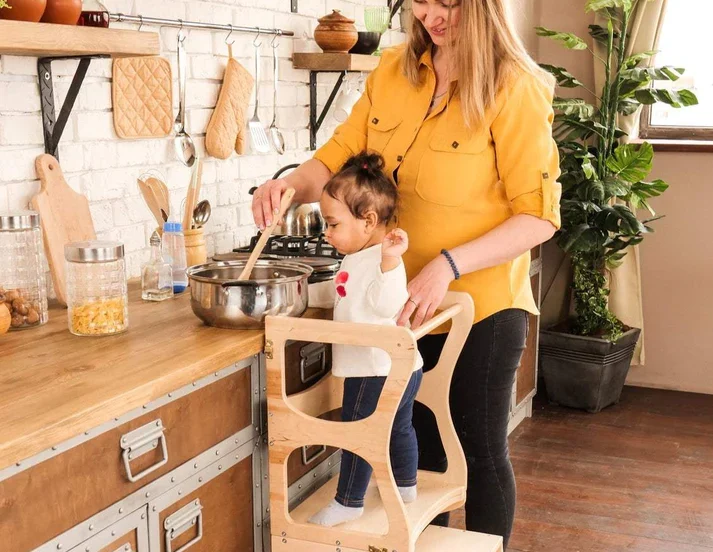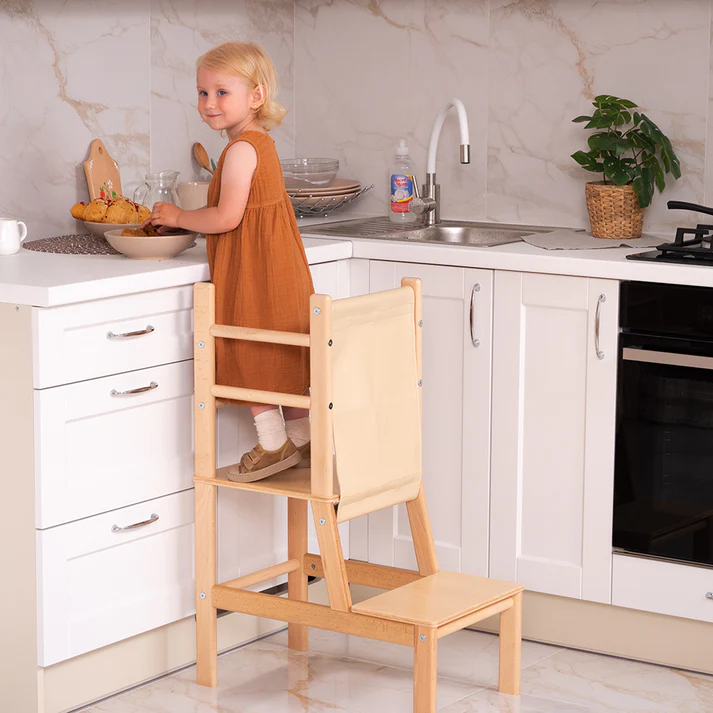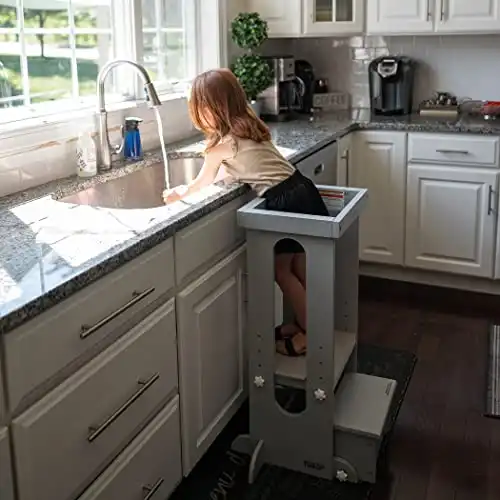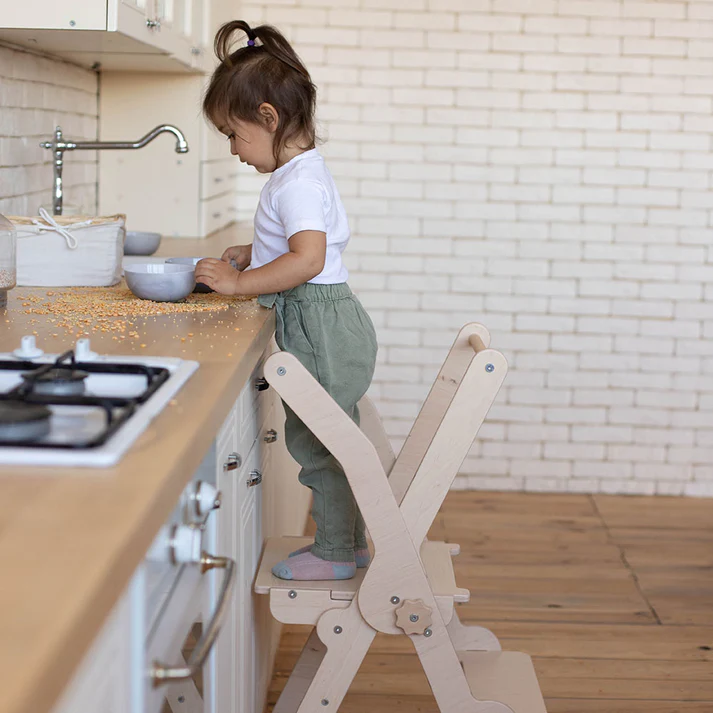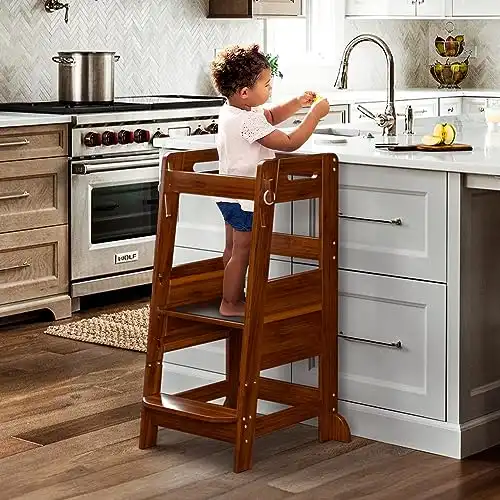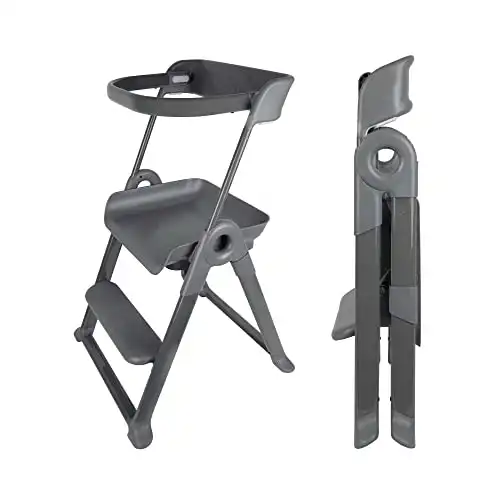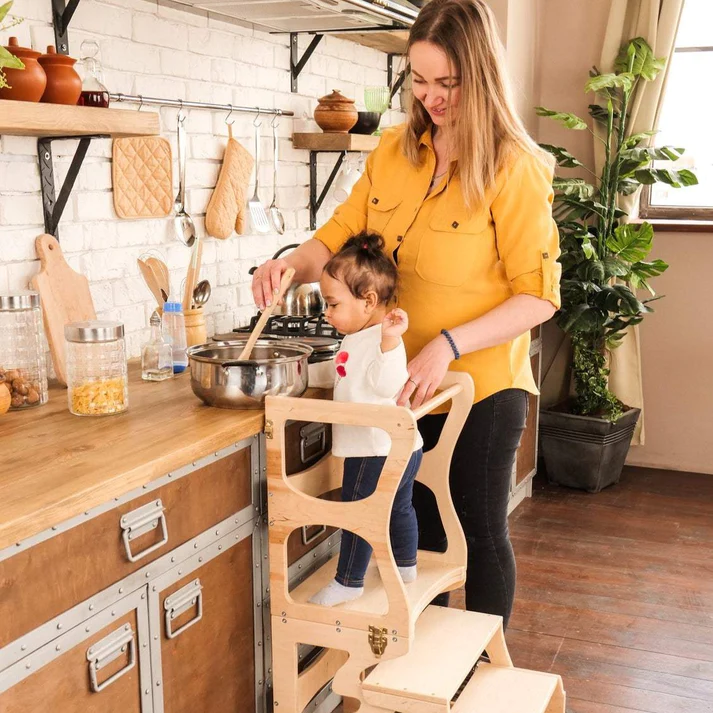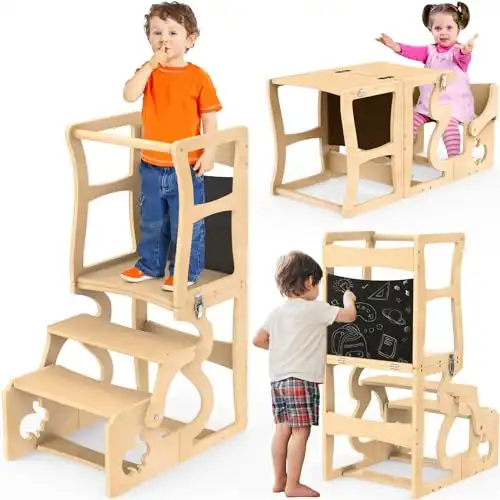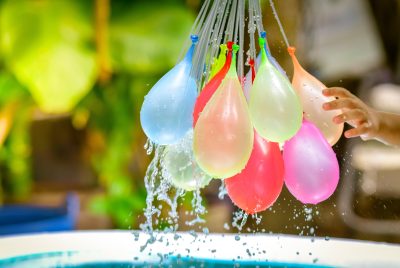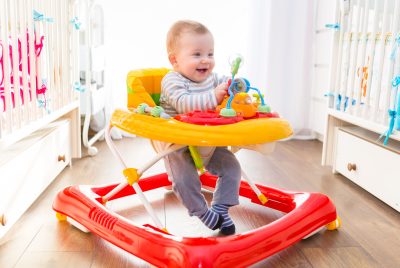Toddler Learning Tower 101: Maximizing Kitchen Time with Your Child
Have you ever found yourself wishing you could get more done in the kitchen while also spending quality time with your little one? Well, you’re in luck! Today, I’m diving into the wonderful world of toddler towers and how they can transform your kitchen time together. These nifty gadgets are not just a step stool; they’re a gateway to bonding, learning, and, yes, a bit of mess-making fun. So, let’s get started on why bringing a toddler learning tower into your home might just be the game-changer you’ve been looking for.
What is a Toddler Tower?
In essence, a toddler tower (or toddler learning tower) is a safely designed stand that allows your toddler to reach counter height safely. Unlike a regular stool, these towers are built with safety in mind, featuring guardrails, a sturdy base, and sometimes even adjustable heights.
It’s like their little fortress of solitude, except it’s in the kitchen, and they’re learning to be the next great chef—or at least a really good helper.
Benefits of Using a Toddler Tower
Safety First
The most significant advantage of a toddler tower is the safety it offers. Unlike regular stools or chairs that are prone to tipping, toddler towers are designed with a broad base and safety rails to prevent falls.
This means your little one can stand securely at counter height, engaging in activities without the risk of slipping off or toppling the tower. It’s peace of mind for you, knowing they’re in a safe spot while participating in kitchen activities or any other high-reaching tasks.
Fostering Independence
There’s something truly empowering about doing things on your own, and toddler towers facilitate just that for your little ones. By giving them the means to reach countertops and sinks safely, they can take part in daily routines like hand washing, helping prepare meals, and cleaning up.
This autonomy not only boosts their confidence but also instills a sense of responsibility from a young age. Watching your child beam with pride after completing a task they did “all by themselves” is a moment of pure joy and a big step in their developmental journey.
Educational Opportunities
The kitchen is a fantastic laboratory for learning, and a toddler tower turns it into an accessible classroom. Here are some of the myriad educational benefits:
Culinary Skills: Simple tasks like mixing, pouring, and measuring introduce children to basic cooking techniques, fostering an interest in food preparation that can last a lifetime.
Math Skills: Counting ingredients, understanding measurements, and learning about volumes and weights offer practical applications of math outside the traditional classroom setting.
Science Experiments: Observing changes in states of matter (such as water boiling or butter melting) can spark curiosity about scientific principles in a tangible way. A great way to encourage STEM learning.
Language Development: New vocabulary words pop up naturally during cooking, from ingredient names to action words. Describing textures, tastes, and processes also enriches their language skills.
Sensory Exploration: Engaging with a variety of textures, smells, and tastes helps in sensory development, encouraging more adventurous eating and a deeper understanding of food.
Cultural Awareness: Preparing dishes from different cultures can be a gateway to conversations about the world, fostering an appreciation for diversity from a young age.
Choosing the Right Toddler Tower
Choosing the right toddler tower is a decision that impacts not only the safety of your child but also their engagement and learning opportunities. Let’s break down the key factors to consider to ensure you select the best option for your family’s needs.
Safety Features to Look For In Your Toddler Tower
The paramount consideration is always safety. A good toddler tower should have the following:
- Sturdy Construction: It should feel solid and not wobble under your child’s weight. Wooden towers are popular for their durability and stability, but high-quality plastic models can also be safe and sturdy.
- Safety Rails: Look for a model with guardrails or barriers on all sides to prevent falls. The openings should be small enough to stop your child from slipping through.
- Non-Slip Feet: To prevent the tower from sliding on kitchen floors, especially when your child is climbing in or out.
- Height Adjustability: Being able to adjust the platform height means the tower can grow with your child, ensuring their safety over time.
Design Matters
After safety, consider how the toddler tower’s design will fit into your home and daily life. This Boon Pivot Foldable Toddler Tower is a firm favourite and has a rating a 4.8 on Amazon.
- Space Efficiency: If you’re short on space, look for a foldable design that can be easily stored or a slim profile that doesn’t take up too much room.
- Aesthetics: You’ll find toddler towers in a variety of finishes and colors, so consider one that matches your kitchen or home’s decor.
- Ease of Cleaning: Kitchens get messy, especially with little helpers. A tower that’s easy to wipe down will make your life much easier.
- Accessibility: Some models come with steps, others with a simple platform. Consider what would be easiest for your child to use independently.
Reviews and Recommendations
Parent reviews can be incredibly helpful in narrowing down your choices. Woods & Hearts specialise in Montessori Furniture and come highly reccomened among fellow parents.
- Parental Feedback: Look for reviews that detail a child’s interaction with the tower and any safety concerns or benefits noted over time.
- Awards and Endorsements: Products that have received awards or endorsements from parenting organizations or child safety groups can offer an added layer of reassurance.
- Personal Recommendations: If you have friends or family members who have used a toddler tower, ask them about their experiences. First-hand insights can be invaluable.
Tips for Maximizing Kitchen Time with Your Toddler
Starting Small
Begin with straightforward tasks that match your toddler’s skill level. Success in these early stages builds confidence and eagerness to participate more. Here are a few ideas:
- Washing Fruits and Vegetables: This simple task teaches them about cleanliness and the importance of fresh ingredients.
- Stirring and Mixing: Allow them to help mix batter or dough. It’s a fun way to develop their motor skills and understand mixtures.
- Sorting Ingredients: Have them sort vegetables, fruits, or pasta shapes. It’s an excellent way for them to learn about different food types and shapes.
Making It a Learning Experience
Every task in the kitchen can be a learning opportunity. Engage their curiosity with explanations that are tailored to their age and understanding:
- Counting and Measuring: Involve them in measuring ingredients. Use clear, simple language to introduce basic concepts of math.
- Explaining Processes: Talk about how bread rises or cookies bake. These mini science lessons help them understand cause and effect.
- Food Safety: Teach them why we wash hands before cooking and why certain foods need to be cooked before eating.
Keeping It Fun and Safe
The key to maintaining interest when using the toddler tower is to ensure the experience remains enjoyable and free from harm:
- Incorporate Play: Sing songs, make funny food shapes, or create stories about the dishes you’re making. This keeps the mood light and engaging.
- Safety First: Always supervise your child, especially near hot surfaces or when using sharp tools. Equip them with child-safe utensils to minimize risks.
- Dress for the Occasion: Aprons can protect clothes and make them feel like a real part of the cooking process. Plus, it’s an additional item they can choose and control, further fostering independence.
- This Toddler Learning Tower can be transformed into a table and also features a chalk board for creative play.
Emphasize Participation Over Perfection
Remember, the goal is to involve your child, not to achieve culinary perfection. Celebrate their efforts and contributions, regardless of the outcome. This approach nurtures their self-esteem and reinforces the joy of cooking together.
Create a Routine
Making kitchen time a regular part of your routine sets expectations and gives them something to look forward to. Whether it’s baking cookies every Sunday or helping prepare dinner once a week, consistency is key to building lasting habits and skills.
DIY Toddler Tower Ideas
Embarking on a DIY project to create a toddler tower can be an enriching experience, offering not just a custom piece of furniture but also the satisfaction of building something that enhances your child’s learning and independence. Here’s how you can approach crafting a DIY toddler tower that’s safe, functional, and perfectly tailored to your home.
Planning and Safety
Start with a plan that fits your kitchen and your child’s needs, focusing on materials like solid wood for durability. Safety is paramount, so design with a stable base, smooth edges, and secure rails. Use non-toxic finishes to keep it child-safe. If you do not have any plans, Teds woodworking offers over 16,000 woodworking plans to help get you started.
Customization
Personalize the kitchen tower with your child’s favorite colors or themes, and even add their name for a special touch. This step allows the tower to blend with your home’s decor and make it uniquely appealing to your little one.
Construction Tips
Accuracy in measuring and cutting is crucial for stability. Assemble using strong fasteners, and ensure all parts are well-sanded and securely joined. Finish with a thorough sanding for smoothness and apply child-safe paint or sealant.
Safety Testing
Before use, test the tower for stability under weight and ensure that rails are high and strong enough to keep your child secure. This ensures the DIY tower is not only personalized but also safe and durable.
Closing Thoughts From Me
Incorporating a toddler learning tower into your kitchen routine is more than just about making cooking easier. It’s about creating opportunities for your child to grow, learn, and bond with you. The benefits extend far beyond the kitchen, fostering a sense of independence, safety awareness, and an eagerness to learn that can serve them well in all areas of life. So, why not start this delightful journey today?
FAQs
At what age can my child start using a toddler learning tower? Children as young as 18 months can start using a toddler tower under close supervision, depending on their individual development and mobility.
How do I ensure my toddler’s safety when using a tower? Always supervise your child, choose a tower with safety rails, and ensure it’s on a stable, non-slip surface. Avoid using it near hot stoves or sharp objects.
Can toddler towers be used outside the kitchen? Absolutely! Toddler towers are versatile and can be used anywhere your child needs a little boost to engage in activities at height, like washing hands in the bathroom or helping with projects at a table.
How do I clean and maintain my toddler learning tower? Use a mild soap and water solution for regular cleaning. Check periodically for any loose components or wear and tear, especially if the tower is wooden.
Are there adjustable toddler towers? Yes, many models come with adjustable heights, allowing the tower to grow with your child and remain useful for several years.

